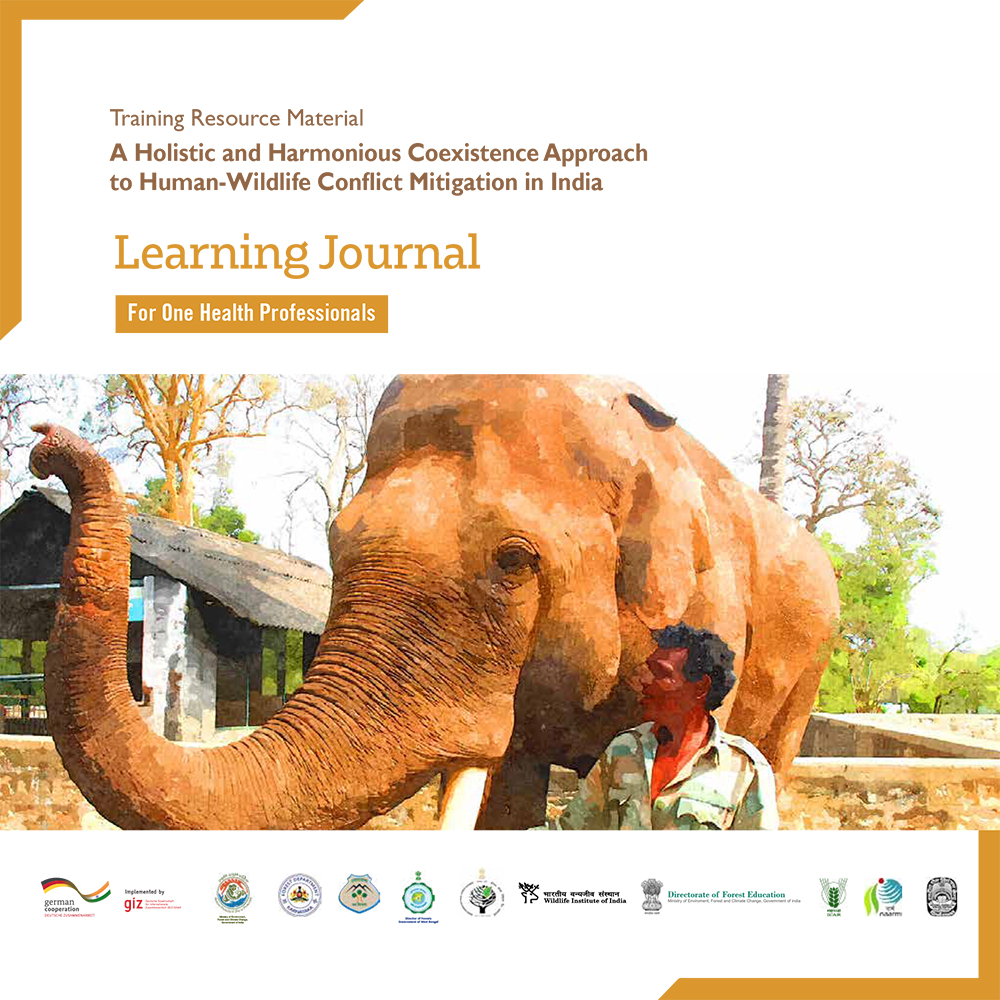The interface between animals and humans is constantly increasing, primarily due to habitat fragmentation and loss, the international trade in wildlife and increasing demands of ecotourism and other forest-dependent livelihoods, resulting in disease spill-over.
The present situation needs to be urgently addressed, considering that human, animal and ecological health are interconnected—it is One Health. The One Health concept is based on the understanding that human, animal, and environmental health are closely interconnected and interdependent.
The One Health is a collaborative, multisectoral, and transdisciplinary approach—working at the local, regional, national and global levels—with the goal of achieving optimal health outcomes, recognizing the interconnection between people, animals, plants and their shared environment. Of late (2021) One Health was defined by One Health High Level Expert Panel (OHHLEP) as an integrated, unifying approach that aims to sustainably balance and optimize the health of people, animals and ecosystems.
One of the most effective ways to integrate One Health approach in HWC mitigation and overall wildlife and protected area management in India is to invest in capacity development of key stakeholders, enabling them in co-creating effective and sustainable solutions for mitigating human–wildlife conflict taking a One Health approach.
The curriculum is modularised, with modules being delivered using different training methods over required time periods. The modularised structure provides flexibility to adapt the contents, methods and durations of different topics on the basis of the training needs of the participants. Learning outcomes have been formulated for different groups of participants, and so the modules can be used in any combination and over different durations, for specific purposes and to fit specific training schedules.
The curriculum on ‘Taking a One Health Approach to HWC Mitigation’ has the following components:
Read more details here
The Trainer's Toolkit is useful for the faculty members and experts of agriculture academies, State Agriculture Universities, other agriculture training institutes, KVKs, as well as for the agriculture sector experts facilitating workshop/ training sessions. This kit contains all the modules and a trainer's guide.
.jpg)
Trainer’s Guide: A Participatory approach to planning and implementing trainings on Human-Wildlife Conflict Mitigation in India (2023)
This trainer’s Guide facilitates the trainers and faculty members of trainings institutions of forest-wildlife, agriculture-veterinary, public health, media, rural development and Panchayati Raj and other relevant sector in planning, implementing and updating the trainings on holistic approach to HWC mitigation effectively through enhanced learning of the participants.
The Trainer’s Guide contains notes that provide the details on the competency framework, competencies-based training curriculum for key actors and stakeholders, provides sample training plans to implement the curriculum, and a detailed section to facilitate use of participatory training methods.
The guide also serves as a compendium of selected participatory training methods, which are innovative, have been tested for their effectiveness, and are easy to be applied. The training methods can be customised to suit the learning objectives, audience, time availability, resource availability and other factors. It is also possible to include new case studies, relevant reading material or training activities as they become available. This guide provides general notes on planning, implementing and evaluating participatory trainings on ‘holistic approach to HWC mitigation in India’, and ‘Taking a One Health Approach to HWC Mitigation in India’ and specific tools for target-group-specific trainings for participants from, agriculture, media, community-institutions and field response teams. To access the Trainer’s Guide, Click here

Content modules, or Training Resource Material contain modules that will facilitate both trainers and participants in receiving background information on the training topics, apart from a field manual that will specifically be used by front-line staff. To access the Training Resource Material, Click here
For participants of the five-day intensive training for senior and mid-management level officers and trainers, with cross-sector participation
At the end of the training, the participants will be able to:
For participants of the five-day intensive training for the front-line staff of forest, veterinary, public health and administration departments, with cross-sector participants
At the end of the training, the participants will be able to:
For participants of the one-day training for panchayat members, farmers, women groups and other members/institutions of the local community
At the end of the training, the participants will be able to:
Learning outcomes for participants of semester course for graduate and postgraduate students
At the end of the training, the participants will be able to:
To access the specialised module on One Health, Click here

Learning Journal, To facilitate the participant’s learning during and after the training, a learning journal is designed to help them capture anything that is of any significance or value to them and may help in enhancing their understanding of the One Health approach to HWC Mitigation, in general, and its application in the field, in particular. It is a place for participants to take notes on their observations on people, animals, systems, environment, and processes during the training.
To access the Learning Journal on One Health, Click here
© 2014 IGBP. All Rights Reserved.
Site By: Virtualpages
